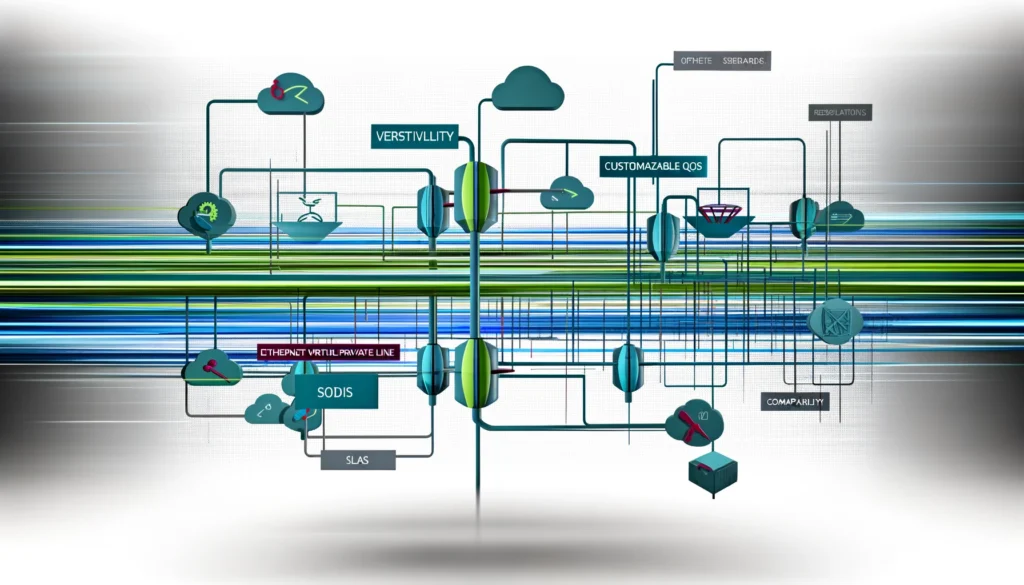The shift to internet-based telephony is becoming increasingly popular. Many businesses are transitioning from traditional systems to modern solutions. The need for better efficiency, flexibility, and cost-effectiveness drives this change. But what does this migration entail, and how can it be executed seamlessly?
This guide delves into the primary differences between these technologies and helps you determine when to choose each. It will also highlight the advantages of an Ethernet Private Line to showcase its advantages over MPLS.
Knowing the Core
What is an Ethernet Private Line?
EPL is a point-to-point service that provides a dedicated, high-speed connection between two locations. It is ideal for organisations needing a reliable, secure connection with minimal latency.
What is Multi-Protocol Label Switching?
Conversely, MPLS is a technique that produces data from one node to the following depending on short path labels rather than long network addresses. It is widely used for its flexibility and ability to manage different types of traffic efficiently.
Performance and Reliability
When considering performance, an EPL typically offers superior reliability. It provides a dedicated bandwidth, ensuring the connection is not shared with other users. This dedicated bandwidth translates to consistent performance and minimal latency, making it perfect for applications requiring real-time data transmission.
Reliability is necessary for businesses that rely heavily on their network for daily operations. A stable and consistent connection can prevent downtime and improve productivity. In contrast, MPLS can experience fluctuations in performance, especially during peak usage times, since the bandwidth is shared among multiple users.
Security Considerations
Security is another significant factor when comparing these two technologies. An EPL offers a secure point-to-point connection, reducing the risk of data breaches. This makes it an excellent choice for industries managing sensitive information, such as finance and healthcare.
While MPLS is generally secure, routing through multiple nodes could present potential vulnerabilities. For businesses prioritising security, the dedicated nature of an EPL provides a higher level of assurance.
Adaptability and Expandability
Expandability is essential for growing businesses. EPL offers excellent expandability, allowing organisations to increase bandwidth as needed without significant overhauls. This flexibility is an influential advantage for companies anticipating growth and needing to adapt quickly to changing demands.
MPLS is known for its adaptability. It supports multiple protocols and is efficient for managing diverse traffic types. However, this adaptability often comes at the cost of complexity and potential performance issues. For straightforward, high-performance requirements, an EPL may be more suitable.
Cost Implications
Cost is always a critical consideration. While the initial setup for an EPL might be higher, the investment pays off in terms of reliability, performance, and security. Over time, consistent performance can lead to lower operational costs and higher productivity.
MPLS can be cost-effective for organisations with extensive networking needs and varied traffic types. However, the shared nature of the service may lead to hidden costs related to performance management and potential downtime. Investing in an EPL can result in long-term savings due to its dedicated nature and consistent performance.
When to Choose Each
Opting for EPL
An EPL is ideal for businesses needing a high-performance, secure, reliable connection between two locations. It is particularly beneficial for industries requiring real-time data transmission and those handling sensitive information.
When MPLS Fits the Bill
MPLS suits organisations that manage multiple traffic types across a broad network. Its flexibility and support for various protocols make it a good choice for complex networking needs.
Choosing between Ethernet Private Line and MPLS depends on your business needs and priorities. Evaluating your network requirements will help determine the best fit for your business, ensuring efficient and secure communication. Understanding the critical differences between these technologies will guide businesses in making an informed decision.

